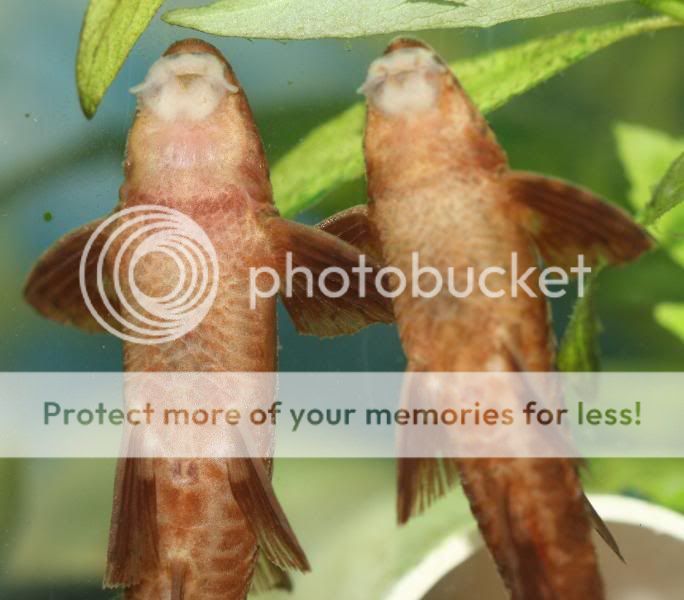All assigned numbers: L010a
Name:
Common Names: Red Lizard Pleco, Red Lizard Catfish,
Location: The red color is probably artificial, 'man-made'. That means that this species is (more than likely) not found in the wild.
It is not known where the original specimen were collected, and what species they were.
Photos:

Appearance:
Compatibility: Peaceful and somewhat secretive fish that won't bother its tank mates.
Sexing and Breeding:
Diet: Will eat any food that reaches it: Bloodworms, mosquito larvae pieces of shrimp, dry flakes, sinking catfish tablets, vegetables (zucchini, cucumber).
Water parameters: Temp 22-28cA tank with dimmed lights and a good amount of hiding places (plants, drift wood, rocks, artificial caves) is ideal for this catfish. A small tank is sufficient for a group of these fish: 24x12x12" (60x30x30cm.) is enough to house a single specimen, for a breeding group of 2-3 adults a 32x14" (80x35cm.) is better suitable.
Substrate should be sand or smoothened gravel: these fish love to burrow in the substrate, and sharp, jagged gravel can damage the mouth parts or the underside of the fish.
Typical for South American catfish, this species does best in soft, slightly acidic to neutral water, good oxygenation and a good amount of currents. It can however adapt to harder, more akaline water, and may even reproduce under these conditions.
Max Size: About 12cm. (5").
Bred by: Brengun
Breeding Log: See post below. For adding comments and questions please use the original thread which is herehttp://www.plecoplanet.com/forum/showthread.php?t=6067
Additional Comments:
It's not fully clear whether this species is found in the wild, or that it is a fish 'engineered' by man.
Profile information used with permission from www.piranha-Info.com
Name:
Common Names: Red Lizard Pleco, Red Lizard Catfish,
Location: The red color is probably artificial, 'man-made'. That means that this species is (more than likely) not found in the wild.
It is not known where the original specimen were collected, and what species they were.
Photos:

Appearance:
Compatibility: Peaceful and somewhat secretive fish that won't bother its tank mates.
Sexing and Breeding:
Diet: Will eat any food that reaches it: Bloodworms, mosquito larvae pieces of shrimp, dry flakes, sinking catfish tablets, vegetables (zucchini, cucumber).
Water parameters: Temp 22-28cA tank with dimmed lights and a good amount of hiding places (plants, drift wood, rocks, artificial caves) is ideal for this catfish. A small tank is sufficient for a group of these fish: 24x12x12" (60x30x30cm.) is enough to house a single specimen, for a breeding group of 2-3 adults a 32x14" (80x35cm.) is better suitable.
Substrate should be sand or smoothened gravel: these fish love to burrow in the substrate, and sharp, jagged gravel can damage the mouth parts or the underside of the fish.
Typical for South American catfish, this species does best in soft, slightly acidic to neutral water, good oxygenation and a good amount of currents. It can however adapt to harder, more akaline water, and may even reproduce under these conditions.
Max Size: About 12cm. (5").
Bred by: Brengun
Breeding Log: See post below. For adding comments and questions please use the original thread which is herehttp://www.plecoplanet.com/forum/showthread.php?t=6067
Additional Comments:
It's not fully clear whether this species is found in the wild, or that it is a fish 'engineered' by man.
Profile information used with permission from www.piranha-Info.com










